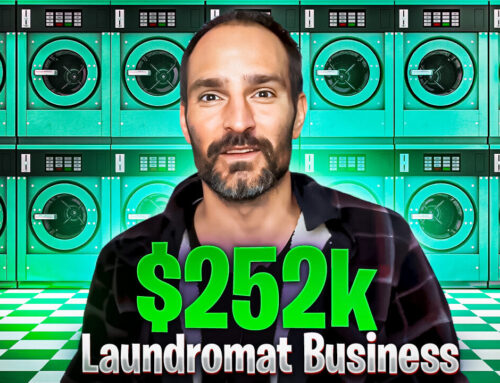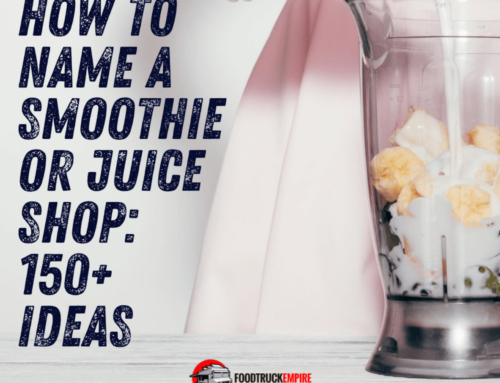 Sooner or later, as with any start-up venture, your Vending Machine venture is going to need a business plan. The importance of this one single document is massive, and for two significant reasons. Firstly, a proper business plan, one that is fully organized, researched, and realistically attractive with promising figures, is THE key to having high chances of placing a successful pitch to money lenders and banks. Of course there’s also being able to present it smoothly, knowing what’s in the plan by heart, and speaking ‘the language,’ but it all means diddly if the business plan looks haphazard or, even worse, not profitable/promising enough to convince them of return investment.
Sooner or later, as with any start-up venture, your Vending Machine venture is going to need a business plan. The importance of this one single document is massive, and for two significant reasons. Firstly, a proper business plan, one that is fully organized, researched, and realistically attractive with promising figures, is THE key to having high chances of placing a successful pitch to money lenders and banks. Of course there’s also being able to present it smoothly, knowing what’s in the plan by heart, and speaking ‘the language,’ but it all means diddly if the business plan looks haphazard or, even worse, not profitable/promising enough to convince them of return investment.
Secondly, and in my opinion the most important aspect, is how important writing one of things is to YOU. This vending machine business will be filled with so many small details that you as the owner need to be aware about, for running, strategizing, and planning long-term future. You need to know everything from demographics to what you should be realistically making within the first, second, and third years of business; not to mention set proper goals for yourself to follow and reach for. And to gather this information takes a lot of work that not all owners truly get into, which can lead to disastrous results as they realize too late that they aren’t making the return in profit as fast as they imagined; which, realistically, often takes a few years before one can start expecting. Being able to set these expectations, plan your life and work accordingly, and make sure you are truly ready to go through what it’s going to take before your career as an amazingly successful and profitable vending empire owner truly kicks off.
There are a lot of sections to these, but tackled one at a time with proper intent, which one may want to start about a year before ‘premiering’ the business, and what can seem daunting is sure to finish much easier than expected… like one of those annoying school business pamphlet projects. Tackle each one of these sections, and you’re sure to build up your ideal business plan.
Note that this ‘template’ doesn’t have to be exact; though you’ll want to keep the main sections in order, one can adjust the order and use of ‘sub sections’ somewhat depending on how it fits your exact business. Don’t feel absolutely required to follow it to a T. Also, it’s not stated specifically in the various sections, but filling your plan with as many Graphs, Tables, and other Data Sources to display points and figures is definitely suggested, both to look professional and allow easy reading/understanding of the points.
Executive Summary
Besides providing very quick, general summaries and assumptions about what the following sections of your plan will further go into detail about, the Executive Summary is also where you put the face of your proposed company. You’ll want to start off with a quick bit of the Purpose for this plan, usually raising money, followed by where and when it was founded. This will then be followed by classic subsections such as:
Products and Services: a BASIC, quick summary of what particular products you will be offering, along with the services used in getting these out and maintaining relationships, should only need 1-2 paragraphs.
Objectives: what you plan to accomplish in the first year, accounts found and machines bought/sold, etc
Mission Statement: the one section you’re allowed to be all emotional and gooey when you talk about the vision for your business, the ‘motto,’ of course also containing what’s important for you in the business aspect.
Financing: Money you’re seeking and assuming to raise to fund the following statistics.
Management/Team: who founded and will, well, be managing it, whether it’s one person or more.
Sales Forecast: simple and brief expected earnings for each of the following three years.
Expansion: where do you plan to re-invest earnings for the company for growth? New machines, vehicles, warehouses, etc?
Company/Financing Summary
Where one discusses themselves as a company, their registered name, facility/ies, etc, and what their vending business is targeting for the area, along with info on Startup Funding.
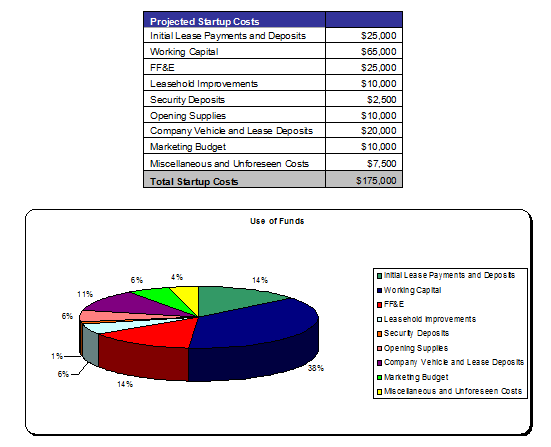
Ownership: Who has official ownership and, if under the thumb of multiple people/investors, what percentage
Required Funds/Startup Summary: the costs needed, BROKEN DOWN via researched factors like equipment, inventory, travel costs, repairs, current assets, Liabilities short+long-term, etc.
Investor + Management Equity: to see IF you are seeking investment from a third/fourth/etc party or if it’s all 100% Management.
Exit Strategy: do you plan on selling after a certain amount of profit is attained? What’s the strategy for that, or any other ideas you had in mind. You’ll want SOMETHING here at least.
Products/Services Overview
A full-on and more in-depth description of your products/service offerings, which can be done in large paragraph format, or be broken down like this:
Product Description: listing each of your products, or at least the main ones/styles, in an outline with description of each, what it is and, if applicable, how it’s prepared by the customer.
Competitive Comparison: how your products differ vs what’s currently on the market, if it’s new or if it offers better value, quality, etc. Done individually or as a whole as is appropriate.
Sales Literature: any brochures/reading material available for customers? Not required field.
Sourcing: where are machines/products gotten? Imported or made yourself, and any important details that may permit.
Future Products: if you’re looking to expand the line-up, or change your inventory seasonally, what direction are you going? Anything specific, or purely adjusting to market change.
Strategic Analysis
Using CURRENT Research, you will detail both the economic factors of the day along with how it looks in the future and how that pertains to your vending machine business. This is also where one details the customer and market profiles, your ‘demographics,’ how they’re distributed, why they’re likely to buy your product and what needs/trends you’ll be taking advantage of. One of the more introspectively detailed sections, will want to cover subsections such as:
E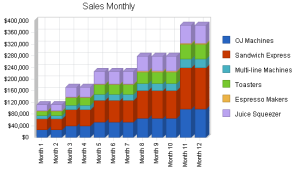 conomic Outlook: how the overall economic climate and interest rate environment patterns look and how your Vending business will go along/survive in it throughout the years.
conomic Outlook: how the overall economic climate and interest rate environment patterns look and how your Vending business will go along/survive in it throughout the years.
Industry Analysis: what’s the vending machine industry like in your state/country, general number of owners and what they average. Basically proof that this is a proven solid business concept. This can and should include a Competitive Analysis and Buying Patterns subsection, considering one needing to survive amongst other vending machines.
Customer Profile: who all is buying from your machine? Specific demographic for main body of sales vs all types, going into further detail if needed and able.
Market Needs/Trends: what as-yet-so-far untapped product/service‘hole’ are your machines filling, if applicable, or what trends/popular wants do you plan to focus on taking advantage now and in the future?
Market Growth: any proven info on future growth for the vending industry or your product in particular in the market.
Marketing Plan
A description of the marketing and advertising plans you’ll use to establish vending machine locations throughout your area, including potential starter targets.
Objectives: outline/bullet points of exact goals, mainly establishing and maintaining relationships.
Strategy: your main take on how you plan to position the business, stand out, get your name and product out there, and other aspects to advertise and work with customers/markets. How much are you focusing on gaining new customers vs keeping old, and why? Focus on questions like these, either in or followed by some likely needed subsections discussing Promotion Strategy, Distribution Strategy, Marketing Programs, and Pricing Strategy, the last of which can be a separate section or sub.
Sales Strategy: How you will identify and focus each sale opportunity, with potential Forecast for the first year.
Organizational and Personnel Plan
Basically everything going into your workers; such as Management Team/Biographies to detail each of your leaders, or just yourself; overall Organizational Structure that outlines different positions; potential Training Plans/Regimens/Strategies for new workers, including assumptions on need for future employees if applicable; and Personnel Plan/Fund Source for listing expected/necessary wage budgets.
Financial Plan
Likely the most detailed and important part of the business plan to research, this will look at all the financial concerns and expectations for your vending machine business from day 1 to year 3. Plenty of graphs and tables will certainly go into play here, alongside plenty of sections to put them in.
Underlying Assumption: in order to officially predict and display your suggested financial futures in a succinct, professional, and seemingly accurate manner, you have to make certain assumptions to what will be happening every year from now. That includes your business’ growth, how much funds you’re starting with, inflation, and what sort of loan you’ll be paying off. Basically, setting up the factors that influence your predicted budgets and cash flow.
S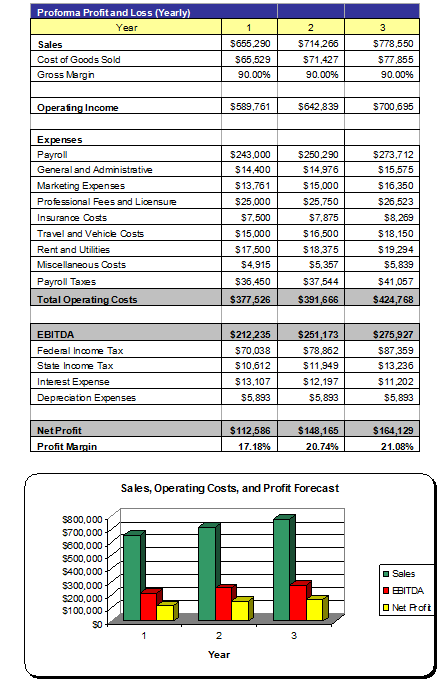
Profit and Loss Statements: a projected analysis for the first 3 years of Gross Margins and Profits. This, along with everything following, should include balance sheets listing all expected costs applied.
Expanded Profit and Loss: breaking it down to every month of the first year and quarters of year 2 and 3; yes this is often done as well as the simple yearly profit-loss.
Cash Flow Analysis: simple yearly table of where you expect to get cash from, and how much, including sales and investments, compared to repayment, asset purchases, and dividend costs.
Expanded Cash Flow: see Expanded PnL
Balance Sheet: basically collecting the cost of all assets, including depreciation, and liabilities/equity to determine Net Worth and Total Liabilities for next 3 years.
Business Ratios: a full listing of all these factors, presented yearly, and including growth expectations, only listed as percentages and ratios. A statement of your overall planned budget, growth, profit projections, net worth, etc that can be applied no matter what funds one starts with.
Don’t forget to consider finishing the whole shebang with an Appendix of data and beginning with an Index for professional-looking purposes.
See Also:
It’s hard to get a full understanding of everything that needs written and displayed in your business plan even from this, so we went and found a couple templates and other helpful resource that you should definitely look into when beginning your business plan write-ups.
Finance Resource Example Business Plan – a detailed and simple example of a plan set up for another Vending Machine Business
Vending Services Business Plan – another highly detailed plan that should be viewed over
Did You Think of These Before You Started? – article going into other discussions on the Business Plan, such as Why, Where to Start, Doing the Math, and Growing your Business.




